
Snacking on The Past: 10 Fascinating Food History Books
This content contains affiliate links. When you buy through these links, we may earn an affiliate commission.
Tea espionage? Doctored wine bottles? Origins of cheddar? The use of measurements in recipes? Food history books can be both a wonderful and terrible place.
Lohman looks at eight popular flavors—black pepper, vanilla, curry powder, chili powder, soy sauce, garlic, MSG, and Sriracha—in U.S. cuisine. It’s a fascinating lens to look at U.S. history and, in particular, how we and our food relate to immigrants. It was delightful to learn that the history of curry powder goes back much further than you would expect in U.S. cuisine. It was really fascinating to see how certain tastes became adopted based on our feelings towards immigrants. For instance, many people reviled garlic since it was associated with Italians, but it gained acceptance through French food. I also loved that she talked about the recent history of Sriracha and how it has become such a widespread spice in our day and age.
Ever wondered about the history of forks, spoons, knives, mixing bowls, and even recipe books? Then Consider the Fork is for you. Each chapter is dedicated to a different food utensil and its delightful world history. I was surprised to find out how late the Western world started using the fork compared to its brothers, the spoon and knife. Like the adoption of many new technologies, it was regarded poorly and denigrated as feminine. Bee Wilson also explores the evolution of recipe books; what a revelation it was when measurements were included in recipes!
Jen Lin-Liu’s work is a combination of a food history and travel narrative. Jen Lin-Liu runs a cooking school in Beijing. After her honeymoon, she decides to explore the claim that Marco Polo brought noodles to Italy from China. She starts in Beijing and makes her way to Rome through all of China, Central Asia, Iran, Turkey, and then Italy.
Her descriptions of the food are positively mouthwatering. I want to go find the delicious noodles she has in China or the rice plov dishes that she has through Central Asia. Throughout the book, she goes into the homes of people on her journey and gives us little snapshots of what it is like to be in Uighur territory in Western China, Iran, Uzbekistan, Kyrgyzstan, and Turkey. She also explores the gendered aspects of food preparation and consumption throughout her trip while also trying to figure out her role in the world as a new wife and professional.
This book is a fascinating exploration of the wine industry during Nazi occupation in France. What I love about it is that it shows the degrees of collaboration and rebellion that any culture faces in time of authoritarian occupation. Some people completely rebel against Vichy France and the Nazis, whereas others are completely complicit. More interestingly there are people in between that rebel in their own special ways. For instance, Parisian restaurants bricked away their best wines and placed spiders over those new walls to keep the best wines from the Germans. Also, there’s an entire chapter about a POW camp holding a wine party to keep up morale.
Rose talks about how the British wanted to break China’s monopoly on the tea trade. People outside of China knew very little about tea; no one even knew if green and black tea came from different plants. Rose explores the crazy story about botanist Robert Fortune going to China to uncover the secret of tea and to steal specimens. The object? So that the British could grow their own tea in India. Fortune was also charged with convincing tea laborers to leave China to share their secrets about cultivating tea. Sarah Rose labels it “the world’s biggest corporate espionage” and she’s absolutely correct. Not only is it a dark story about tea, it also explores the progress in plant cultivation.
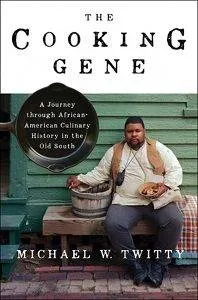 6. The Cooking Gene: A Journey Through African American Culinary History in the Old South, by Michael Twitty
In this memoir, Michael Twitty tries to uncover his family history through the food. He explains in his conclusion: “The only question I’ve ever wanted to answer for myself was, how was my destiny shaped by the history of southern food?” (404). His journey takes us through the complex and at times uncomfortable narrative of American history.
One thing that this book reminds me is how the slavery really was a defining feature of the modern world. Little was not impacted by it. What we ate and what we wanted to eat were also heavily influenced by the slave trade. He mentions the work of Stephen D. Behrendt who noted that “The slave trade was timed to make deliveries of enslaved Africans in tune with the agricultural cycle, especially those of maize, rice, and yams”(Twitty, 208). He also dives into the world of rice, barbecue, religious importance of food, and so much more.
The book made me think about how political the idea of genealogy can be. Michael Twitty likens the challenge of tracing family history to the Japanese art of Kintsugi. The memoir also explores the legacy of slavery on soul food and/or Southern cooking. It’s really an important work that should be required reading.
6. The Cooking Gene: A Journey Through African American Culinary History in the Old South, by Michael Twitty
In this memoir, Michael Twitty tries to uncover his family history through the food. He explains in his conclusion: “The only question I’ve ever wanted to answer for myself was, how was my destiny shaped by the history of southern food?” (404). His journey takes us through the complex and at times uncomfortable narrative of American history.
One thing that this book reminds me is how the slavery really was a defining feature of the modern world. Little was not impacted by it. What we ate and what we wanted to eat were also heavily influenced by the slave trade. He mentions the work of Stephen D. Behrendt who noted that “The slave trade was timed to make deliveries of enslaved Africans in tune with the agricultural cycle, especially those of maize, rice, and yams”(Twitty, 208). He also dives into the world of rice, barbecue, religious importance of food, and so much more.
The book made me think about how political the idea of genealogy can be. Michael Twitty likens the challenge of tracing family history to the Japanese art of Kintsugi. The memoir also explores the legacy of slavery on soul food and/or Southern cooking. It’s really an important work that should be required reading.
 7. Vanilla: The Cultural History of the World’s Favorite Flavor and Fragrance by Patricia Rain
I never knew how crazy the world of vanilla could be. Rain’s text goes into the history of the cultivation of vanilla to the current state of the market. Vanilla is a highly demanded commodity in the world; demand always outstrips supply. Also, the cultivation of vanilla is all thanks to Edmond Albius, a slave on the island of Réunion (or Bourbon at the time), who figured out how to hand pollinate the plants.
7. Vanilla: The Cultural History of the World’s Favorite Flavor and Fragrance by Patricia Rain
I never knew how crazy the world of vanilla could be. Rain’s text goes into the history of the cultivation of vanilla to the current state of the market. Vanilla is a highly demanded commodity in the world; demand always outstrips supply. Also, the cultivation of vanilla is all thanks to Edmond Albius, a slave on the island of Réunion (or Bourbon at the time), who figured out how to hand pollinate the plants.
This thoroughly researched book looks into history and influence of the US military has had on the food US people eat. So much of what we know today in our food system can be traced back to military research tackling the issue how feeding a lot of people quickly and efficiently. It’s an incredibly detailed and scientific explanation on how advances by the military has impacted our food, everything from chocolate bars, Kraft Mac ‘n Cheese, Lunchables to refrigeration. If you eat it, it’s likely been influenced by the military.
I included both of his books in this list because they are both delightful and informative. Cheddar looks specifically at the world of Cheddar in the US and the UK. It really expanded my knowledge of what cheddar could be. I didn’t even know there were cheddars made of goat’s milk. Also, the discussion of different storage practices, plastic rinds v. hand packaged, was very illuminating. When I finished the book, I ran out to my closet cheese shop to try various things he talked about.
Cheesemonger talks about Edgar’s experiences as a cheesemonger. He talks about how he stumbled into the role and grew to really love cheese. He talks about the paradox that people (urban elites) want artisanal cheeses but the available land needed to make cheeses is being bought up. We want local foods but land near cities is being gobbled up. The memoir covers his experiences working at worker owned co-op and so much more. Each chapter ends with two recommendations for cheese. I’ve got my notes ready for a feast!
In this delightful work, Jennifer 8. Lee looks at the history and legacy of Chinese food in the US. She attempts to unravel the American love for Chinese food (or Americanized Chinese food). Lee dives into the controversy of who made the first fortune cookie with surprising (and unexpectedly dark) results. She also tries to uncover the truth behind General Tso’s Chicken and the origins of chop suey in the US. Lee also tries to understand why American Jews love Chinese food so much. She also talks about the darker side of this love including the human smuggling of restaurant workers, the targeting of delivery men, and much more. It’s a worthwhile read, looking at the intersection of food, race, and immigration in the US.
That’s just a small snack of the best food history books out there! Hit the comments to share your favorites.
Why read food history books?
Our favorite foods have fascinating backstories. For instance, I recently read that German immigrants and their beer houses in Texas helped popularize chili powder. Who knew! But other food histories uncover dark dealings, such as the role that cheese played in the slave trade or the level of collaboration between cheese producers and Nazis. What draws me to these food history books is the fact that a single food item (or items) helps to uncover all the histories of an era such as the political, economic, social, and cultural instead of segmenting one out.The best food history books
Below are ten food history books or narratives that go beyond cookbooks to explore different kinds of food from all over the world.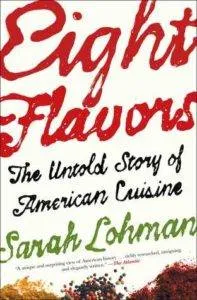 1. Eight Flavors: The Untold Story of American Cuisine By Sarah Lohman
1. Eight Flavors: The Untold Story of American Cuisine By Sarah Lohman
Lohman looks at eight popular flavors—black pepper, vanilla, curry powder, chili powder, soy sauce, garlic, MSG, and Sriracha—in U.S. cuisine. It’s a fascinating lens to look at U.S. history and, in particular, how we and our food relate to immigrants. It was delightful to learn that the history of curry powder goes back much further than you would expect in U.S. cuisine. It was really fascinating to see how certain tastes became adopted based on our feelings towards immigrants. For instance, many people reviled garlic since it was associated with Italians, but it gained acceptance through French food. I also loved that she talked about the recent history of Sriracha and how it has become such a widespread spice in our day and age.
 2. Consider the Fork: A History of Invention in the Kitchen By Bee Wilson
2. Consider the Fork: A History of Invention in the Kitchen By Bee Wilson
Ever wondered about the history of forks, spoons, knives, mixing bowls, and even recipe books? Then Consider the Fork is for you. Each chapter is dedicated to a different food utensil and its delightful world history. I was surprised to find out how late the Western world started using the fork compared to its brothers, the spoon and knife. Like the adoption of many new technologies, it was regarded poorly and denigrated as feminine. Bee Wilson also explores the evolution of recipe books; what a revelation it was when measurements were included in recipes!
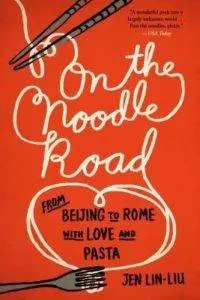 3. On the Noodle Road: From Beijing to Rome, with Love and Pasta byJen Lin-Liu
3. On the Noodle Road: From Beijing to Rome, with Love and Pasta byJen Lin-Liu
Jen Lin-Liu’s work is a combination of a food history and travel narrative. Jen Lin-Liu runs a cooking school in Beijing. After her honeymoon, she decides to explore the claim that Marco Polo brought noodles to Italy from China. She starts in Beijing and makes her way to Rome through all of China, Central Asia, Iran, Turkey, and then Italy.
Her descriptions of the food are positively mouthwatering. I want to go find the delicious noodles she has in China or the rice plov dishes that she has through Central Asia. Throughout the book, she goes into the homes of people on her journey and gives us little snapshots of what it is like to be in Uighur territory in Western China, Iran, Uzbekistan, Kyrgyzstan, and Turkey. She also explores the gendered aspects of food preparation and consumption throughout her trip while also trying to figure out her role in the world as a new wife and professional.
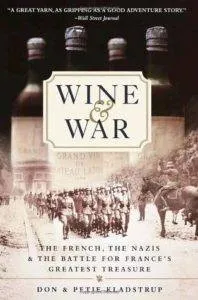 4. Wine and War: The French, the Nazis, and the Battle for France’s Greatest Treasure byDonald Kladstrup and Petie Kladstrup
4. Wine and War: The French, the Nazis, and the Battle for France’s Greatest Treasure byDonald Kladstrup and Petie Kladstrup
This book is a fascinating exploration of the wine industry during Nazi occupation in France. What I love about it is that it shows the degrees of collaboration and rebellion that any culture faces in time of authoritarian occupation. Some people completely rebel against Vichy France and the Nazis, whereas others are completely complicit. More interestingly there are people in between that rebel in their own special ways. For instance, Parisian restaurants bricked away their best wines and placed spiders over those new walls to keep the best wines from the Germans. Also, there’s an entire chapter about a POW camp holding a wine party to keep up morale.
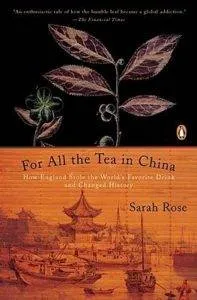 5. For All the Tea in China: How England Stole the World’s Favorite Drink by Sarah Rose
5. For All the Tea in China: How England Stole the World’s Favorite Drink by Sarah Rose
Rose talks about how the British wanted to break China’s monopoly on the tea trade. People outside of China knew very little about tea; no one even knew if green and black tea came from different plants. Rose explores the crazy story about botanist Robert Fortune going to China to uncover the secret of tea and to steal specimens. The object? So that the British could grow their own tea in India. Fortune was also charged with convincing tea laborers to leave China to share their secrets about cultivating tea. Sarah Rose labels it “the world’s biggest corporate espionage” and she’s absolutely correct. Not only is it a dark story about tea, it also explores the progress in plant cultivation.
 6. The Cooking Gene: A Journey Through African American Culinary History in the Old South, by Michael Twitty
In this memoir, Michael Twitty tries to uncover his family history through the food. He explains in his conclusion: “The only question I’ve ever wanted to answer for myself was, how was my destiny shaped by the history of southern food?” (404). His journey takes us through the complex and at times uncomfortable narrative of American history.
One thing that this book reminds me is how the slavery really was a defining feature of the modern world. Little was not impacted by it. What we ate and what we wanted to eat were also heavily influenced by the slave trade. He mentions the work of Stephen D. Behrendt who noted that “The slave trade was timed to make deliveries of enslaved Africans in tune with the agricultural cycle, especially those of maize, rice, and yams”(Twitty, 208). He also dives into the world of rice, barbecue, religious importance of food, and so much more.
The book made me think about how political the idea of genealogy can be. Michael Twitty likens the challenge of tracing family history to the Japanese art of Kintsugi. The memoir also explores the legacy of slavery on soul food and/or Southern cooking. It’s really an important work that should be required reading.
6. The Cooking Gene: A Journey Through African American Culinary History in the Old South, by Michael Twitty
In this memoir, Michael Twitty tries to uncover his family history through the food. He explains in his conclusion: “The only question I’ve ever wanted to answer for myself was, how was my destiny shaped by the history of southern food?” (404). His journey takes us through the complex and at times uncomfortable narrative of American history.
One thing that this book reminds me is how the slavery really was a defining feature of the modern world. Little was not impacted by it. What we ate and what we wanted to eat were also heavily influenced by the slave trade. He mentions the work of Stephen D. Behrendt who noted that “The slave trade was timed to make deliveries of enslaved Africans in tune with the agricultural cycle, especially those of maize, rice, and yams”(Twitty, 208). He also dives into the world of rice, barbecue, religious importance of food, and so much more.
The book made me think about how political the idea of genealogy can be. Michael Twitty likens the challenge of tracing family history to the Japanese art of Kintsugi. The memoir also explores the legacy of slavery on soul food and/or Southern cooking. It’s really an important work that should be required reading.
 7. Vanilla: The Cultural History of the World’s Favorite Flavor and Fragrance by Patricia Rain
I never knew how crazy the world of vanilla could be. Rain’s text goes into the history of the cultivation of vanilla to the current state of the market. Vanilla is a highly demanded commodity in the world; demand always outstrips supply. Also, the cultivation of vanilla is all thanks to Edmond Albius, a slave on the island of Réunion (or Bourbon at the time), who figured out how to hand pollinate the plants.
7. Vanilla: The Cultural History of the World’s Favorite Flavor and Fragrance by Patricia Rain
I never knew how crazy the world of vanilla could be. Rain’s text goes into the history of the cultivation of vanilla to the current state of the market. Vanilla is a highly demanded commodity in the world; demand always outstrips supply. Also, the cultivation of vanilla is all thanks to Edmond Albius, a slave on the island of Réunion (or Bourbon at the time), who figured out how to hand pollinate the plants.
 8. Combat Ready Food: How the U.S. Military Shapes the Way You Eat by Anastacia Marx de Salcedo
8. Combat Ready Food: How the U.S. Military Shapes the Way You Eat by Anastacia Marx de Salcedo
This thoroughly researched book looks into history and influence of the US military has had on the food US people eat. So much of what we know today in our food system can be traced back to military research tackling the issue how feeding a lot of people quickly and efficiently. It’s an incredibly detailed and scientific explanation on how advances by the military has impacted our food, everything from chocolate bars, Kraft Mac ‘n Cheese, Lunchables to refrigeration. If you eat it, it’s likely been influenced by the military.
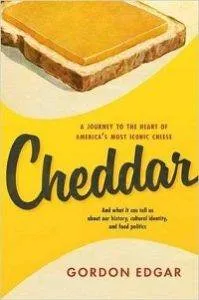 9. Cheddar: A Journey to the Heart of America’s Most Iconic Cheese and Cheesemonger: A Life on The Edge by Gordon Edgar
9. Cheddar: A Journey to the Heart of America’s Most Iconic Cheese and Cheesemonger: A Life on The Edge by Gordon Edgar
I included both of his books in this list because they are both delightful and informative. Cheddar looks specifically at the world of Cheddar in the US and the UK. It really expanded my knowledge of what cheddar could be. I didn’t even know there were cheddars made of goat’s milk. Also, the discussion of different storage practices, plastic rinds v. hand packaged, was very illuminating. When I finished the book, I ran out to my closet cheese shop to try various things he talked about.
Cheesemonger talks about Edgar’s experiences as a cheesemonger. He talks about how he stumbled into the role and grew to really love cheese. He talks about the paradox that people (urban elites) want artisanal cheeses but the available land needed to make cheeses is being bought up. We want local foods but land near cities is being gobbled up. The memoir covers his experiences working at worker owned co-op and so much more. Each chapter ends with two recommendations for cheese. I’ve got my notes ready for a feast!
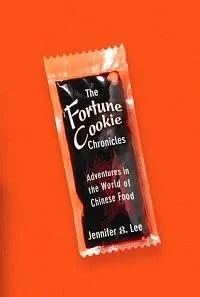 10. The Fortune Cookie Chronicles: Adventures in the World of Chinese Food by Jennifer 8. Lee
10. The Fortune Cookie Chronicles: Adventures in the World of Chinese Food by Jennifer 8. Lee
In this delightful work, Jennifer 8. Lee looks at the history and legacy of Chinese food in the US. She attempts to unravel the American love for Chinese food (or Americanized Chinese food). Lee dives into the controversy of who made the first fortune cookie with surprising (and unexpectedly dark) results. She also tries to uncover the truth behind General Tso’s Chicken and the origins of chop suey in the US. Lee also tries to understand why American Jews love Chinese food so much. She also talks about the darker side of this love including the human smuggling of restaurant workers, the targeting of delivery men, and much more. It’s a worthwhile read, looking at the intersection of food, race, and immigration in the US.
That’s just a small snack of the best food history books out there! Hit the comments to share your favorites.







